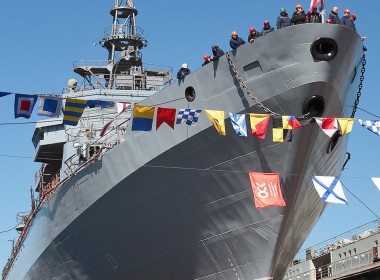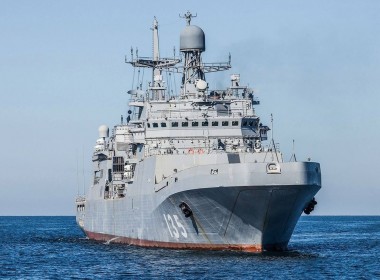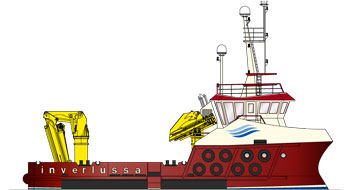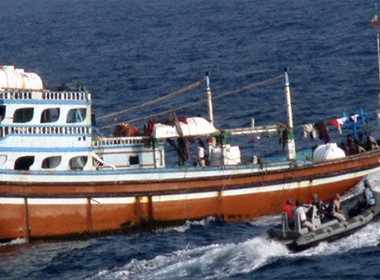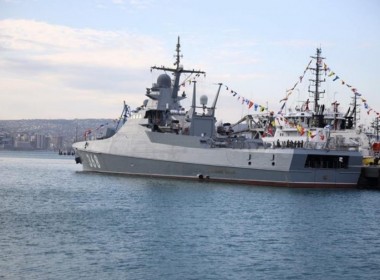VESSEL REVIEW | Vsevolod Bobrov – Russian Navy’s newest logistics ship boasts multi-role capability

Saint Petersburg-based shipyard Severnaya Verf recently handed over the second Project 23120 or Elbrus-class ice-capable fleet support ship to be ordered by the Russian Navy. Built to a design developed by Spetssudoproekt Design Bureau, the vessel has been named Vsevolod Bobrov after a celebrated Russian football and ice hockey player and coach.
As with earlier sister Elbrus, the second Project 23120 vessel was designed primarily to provide logistical support for Russian Navy task forces during their extended sea deployments. Secondary duties include cargo transport, towing of distressed vessels at sea, hydrographic research, seabed mapping, and surface and underwater search and rescue (SAR). Underwater SAR is performed with the vessel operating primarily as a mothership for a smaller deep-diving rescue submersible.
Vsevolod Bobrov has a length of 95 metres, a beam of 22 metres, a draught of nine metres, and a displacement of 10,000 tonnes at full load. The interior can accommodate the regular crew of 27 as well as 43 other personnel, such as rescued survivors of accidents at sea.
The vessel can reach speeds of up to 18 knots when in the open sea. Operating at a cruising speed of 12 knots will allow the vessel to sail up to 5,000 nautical miles – or stay out at sea for 60 days – in between refuelings. Manoeuvrability is enhanced by bow thrusters and rudder propellers.
A dedicated hold will be used for the transport of bulk cargo while the separate aft deck with an area of 700 square metres is available for other forms of freight such as containers and wheeled and tracked vehicles. The two cargo spaces have a combined capacity of approximately 2,000 tonnes.
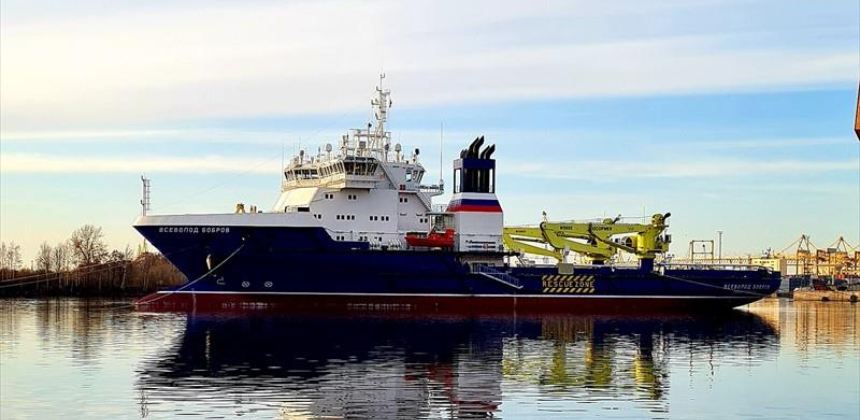
A pair of electro-hydraulic folding cranes on the aft deck and a DP system enable Vsevolod Bobrov to easily load and unload cargo even in ports with unprepared quays. These features will also make it possible for the vessel ship-to-ship transfers of cargo in the open sea. The cranes are capable of lifting up to 50 tonnes and are optimised for handling standard cargo containers.
Towing operations are to be carried out with the aid of main and auxiliary towing winches with bollard pulls of 120 tonnes and 25 tonnes, respectively.
Vsevolod Bobrov has both automation A1 and ice class Arc 4 notations awarded by the Russian Maritime Register of Shipping (KM). These indicate the vessel’s abilities to operate with a minimal bridge crew and to navigate in surface ice up to 0.6 metres thick.
Besides crew cabins, the vessel’s accommodation spaces include a medical bay with six beds and storage areas for firefighting and rescue equipment. Among the emergency service spaces is a decompression chamber for use by divers.
The navigation and communication electronics include X- and S-band radars, a search radar, GPS, and a global navigation satellite system (GLONASS). The communications equipment also feature encryption systems to ensure secure data transfers.
The onboard systems draw electrical power from four 4,450kW diesel generator sets while the vessel is underway. When at berth, a fifth generator specifically for supplying power for hotel loads will be utilised.
Vsevolod Bobrov also has a flight deck capable of accommodating the Russian Navy’s Ka-27 utility helicopters. There is also space on the vessel for two rigid inflatable boats (RIBs), which are to be used for general support duties such as personnel transfers at sea. The helicopters and the RIBs will also significantly augment the vessel’s own SAR capability.
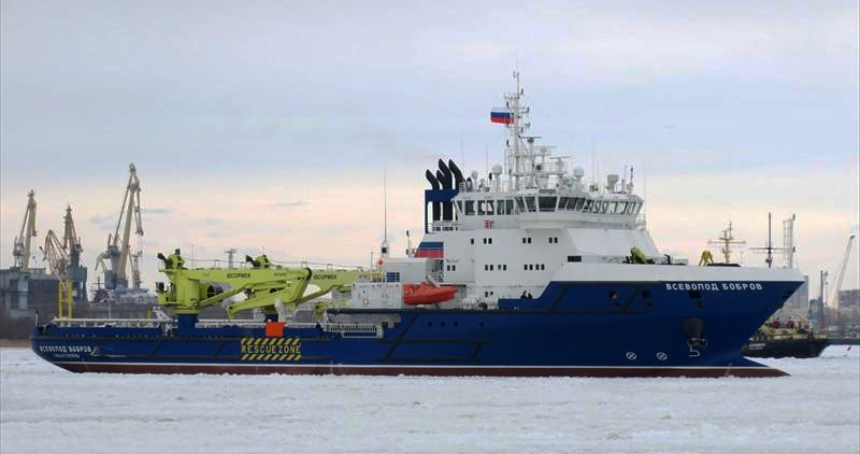
See all the other content for Emergency Services Week here.
| Vsevolod Bobrov | |
| SPECIFICATIONS | |
| Type of vessel: | Logistical support vessel |
| Classification: | Russian Maritime Register of Shipping |
| Flag: | Russia |
| Owner: | Russian Navy |
| Operator: | Russian Navy |
| Designer: | Spetssudoproekt Design Bureau, Russia |
| Builder: | Severnaya Verf, Russia |
| Length overall: | 95 metres |
| Beam: | 22 metres |
| Draught: | 9.0 metres |
| Displacement: | 10,000 tonnes |
| Capacity: | 2,000 tonnes of cargo; utility/SAR helicopter |
| Propulsion: | Rudder propellers |
| Generators: | 4 x 4,450 kW |
| Maximum speed: | 18 knots |
| Cruising speed: | 12 knots |
| Range: | 5,000 nautical miles |
| Radars: | X-band; S-band |
| Other electronics: | Communications encryption equipment; global navigation satellite system |
| Winches: | Main towing winch, 120 tonnes bollard pull; auxiliary towing winch, 25 tonnes bollard pull |
| Cranes: | 2 |
| Other equipment installed: | Decompression chamber; helicopter deck |
| Rescue boats: | 2 x RIBs |
| Accommodation: | Crew cabins; medical bay |
| Crew: | 27 |
| Passengers: | 43 |



